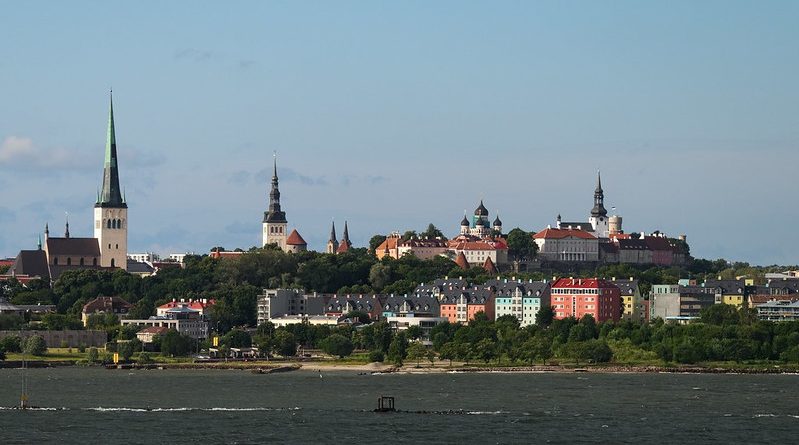A Guide to Tallinn
Nestled in the north-eastern part of the Baltic Sea area, Tallinn, the capital of Estonia, has to be one of the best preserved medieval towns in the whole of Europe. The Old Town area has been on UNESCO’s World Heritage List since 1997, and as soon as you’ve glimpsed its quaint architecture and unique atmosphere you’ll understand why. Merchants’ homes, churches, state buildings and even barns and warehouses have all survived intact since the medieval period.
Constructed mainly between the 11th and 15th centuries, Tallinn had built up its reputation across the Baltic region because of its membership of the Hanseatic League during the 15th and 16th century. The League was formed around the middle of the 12th century by German and Scandinavian seafaring merchants. As there were no navies to protect valuable cargoes, and no international bodies to regulate tariffs and trade, the merchants worked together to establish tariffs, provide for common defence and to make sure ports were safely maintained.
This security meant that Tallinn grew to be a major port and its The Hanseatic League (Hansa) was formed around the middle of the 12th century by German and Scandinavian seafaring merchants. Since there were no navies to protect their cargoes, no international bodies to regulate tariffs and trade, and few ports had regulatory authorities to manage their use, the merchants banded together to establish tariff agreements, provide for common defence and to make sure ports were safely maintained. New economic power boosted artistic and cultural activity there with a lasting effect.
Taking a walking tour around the city is a must, and will help you soak up the historic atmosphere of the old town at its best as you stroll through the picturesque backstreets and absorb the bright activity of its bustling, cobbled squares. You can either find yourself an official guide by looking out for posters or leaflets at the tourist office (located at Niguliste 2 / Kullassepa 4) and around the gift shops, or otherwise set your own itinerary and pace with a map and guidebook in hand. A few places you might like to include in your tour are as follows:
The Town Hall Square, which has been a marketplace, fairground and meeting place for centuries. It was even used for executions.
Tallinn’s Town Hall is the best-preserved medieval town hall in Northern Europe. The presence of the Town Hall itself was first recorded as early as 1322.
The Town Council’s Apothecary, is one of the oldest pharmacies still operating in its original building inside Europe.
St. Olaf’s Church was the tallest church in 13th Century Medieval Europe. The “Neitsitorn”, or “Virgin Tower” was built in the second half of the 14th century, at the same time as the imposing city wall. It has suffered under attacks many times, and has often been rebuilt several times. Today it houses a relaxing café, the ideal place to enjoy a sweeping view over the Old Town and downtown area.
Another tip is to get hold of the all-inclusive city card, issued by Tallinn City Tourist Office, early in your stay. The card is the easiest way explore the Capital’s cultural and historical heritage without having to worry about entrance fees and fares. It entitles you to admission to all museums and main sights in Tallinn, sightseeing tours, free use of public transport and discounts in restaurants and shops, as well as other offers. You can buy the Card from the Tallinn City Tourist Office at Mündi 2, and it can cover periods of 6, 24, 48 or 72 hours, depending on your plans and how much you’ve got to spend.
Lively seasonal festivals and events take place in Tallinn throughout the year. These include football matches, bike rallies, street theatre festivals, film festivals music showcases and lake-running competitions. One of the special highlights is the Old Town Days, held at midsummer, when the central Town Hall Square is transformed into a medieval market, complete with local handicrafts, art, foods, music and dancing, as well as costumed clowns, citizens and musicians entertaining in the streets. Whether you come to hunt for bargains, explore the city’s history or simply to soak up the festive atmosphere, you won’t be disappointed.
If you’re interested in classical or modern music, Tallinn is packed with intimate and varied concert venues, attracting a wide range of performance. The beautiful Medieval Town Hall, the imposing House of the Brotherhood of the Blackheads, the grand St Nicholas’s Museum concert hall, the Gate Tower and the Kanuti Guild Hall are just a few of the many places you might like to visit during your time in the city. To find out what’s on when you are there, look out for posters and leaflets when walking through the town, or ask at the tourist information office for details of events.
Attractive bars and restaurants abound in Tallinn, with a wide range of traditional food venues and modern cuisine packed into the small area of the Old Town itself. Even if you don’t opt for a taste of medieval meals at a traditional restaurant, you might still find yourself eating modern food inside a 14th century building with an intimate, unforgettable atmosphere.
When to visit
The weather in Tallinn is marked by a fairly cold winter, a cool spring with little rain, a fairly warm summer and a long, rainy autumn. Some summers have weeks at a stretch of temperatures above 80F, and a warm, bright summer can keep autumn back until mid-October. The best time to visit is probably between April and August, before any autumn rains set in, and when most concerts, festivals and outdoor events take place.




